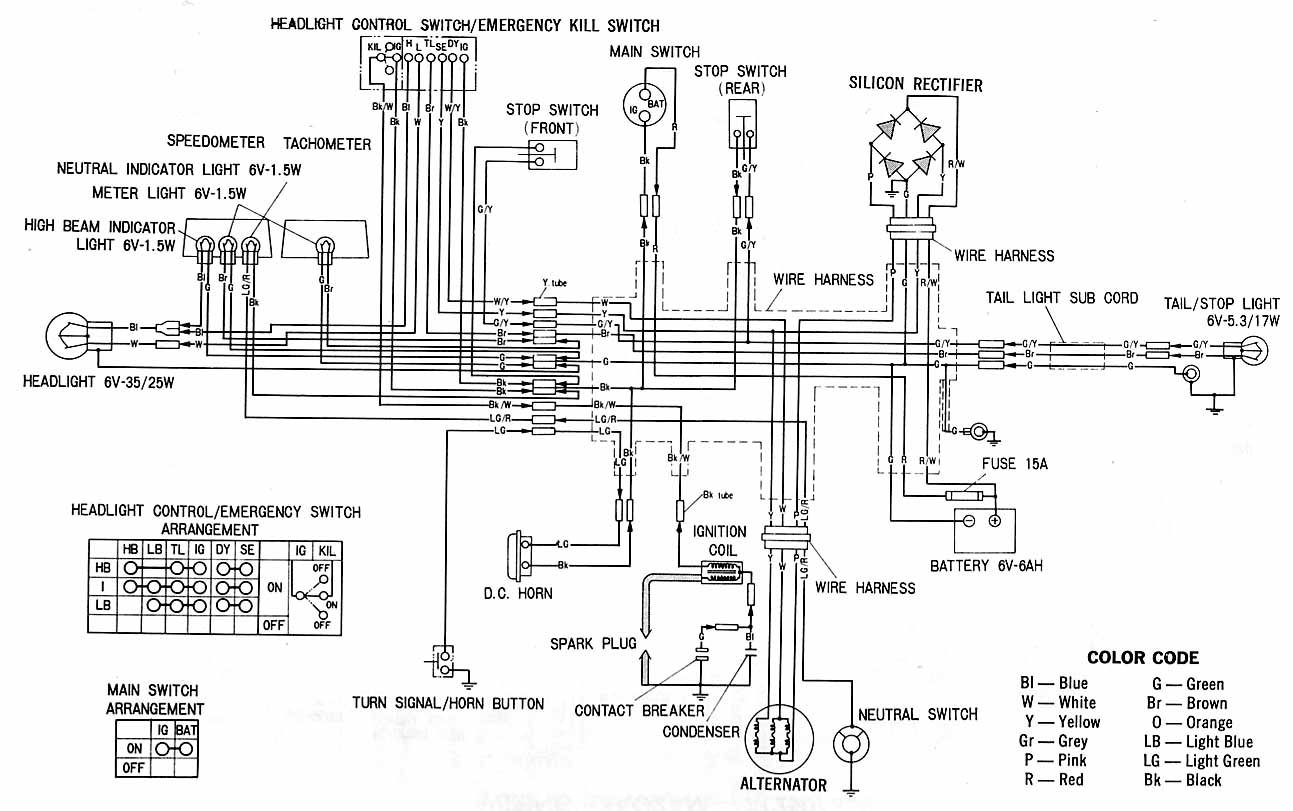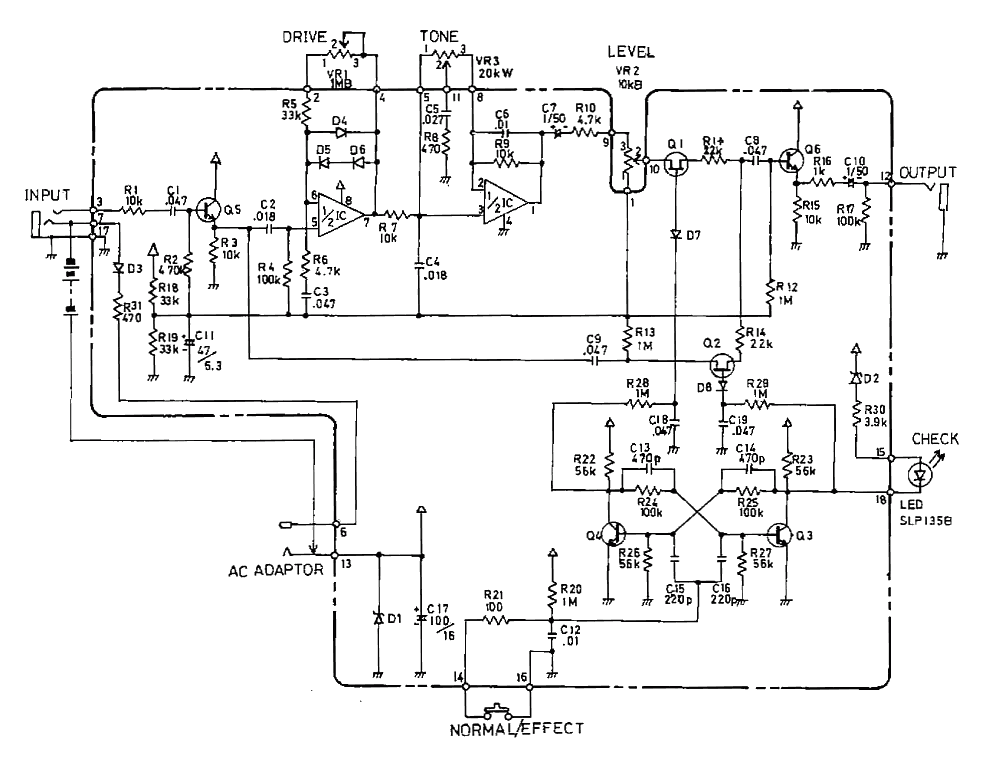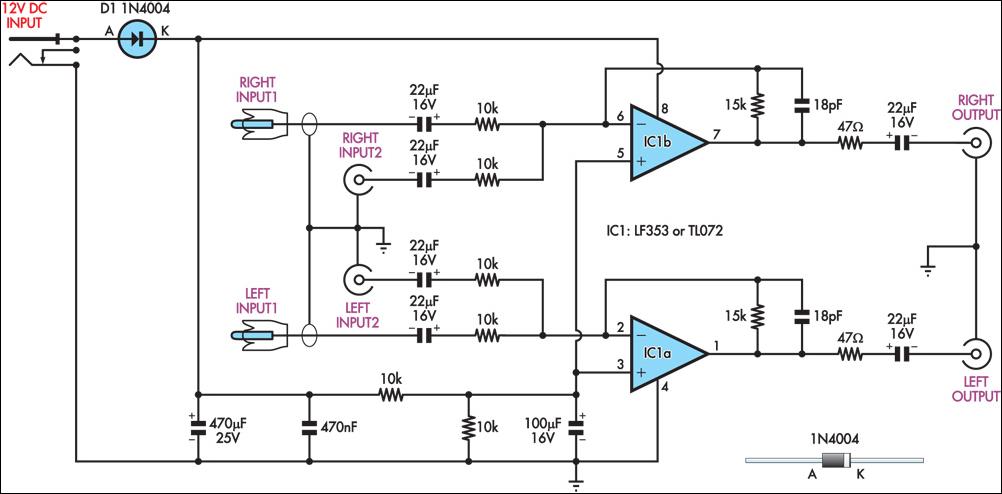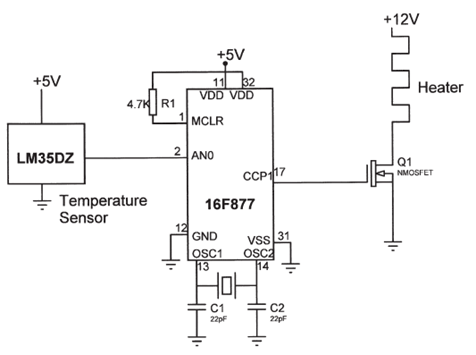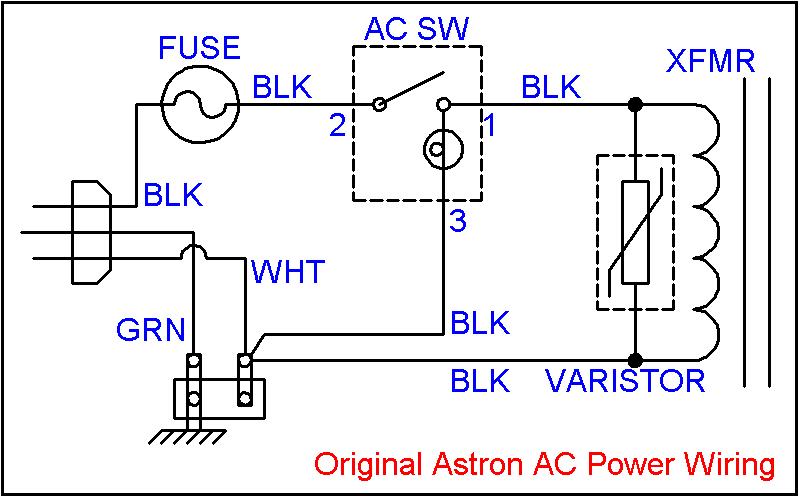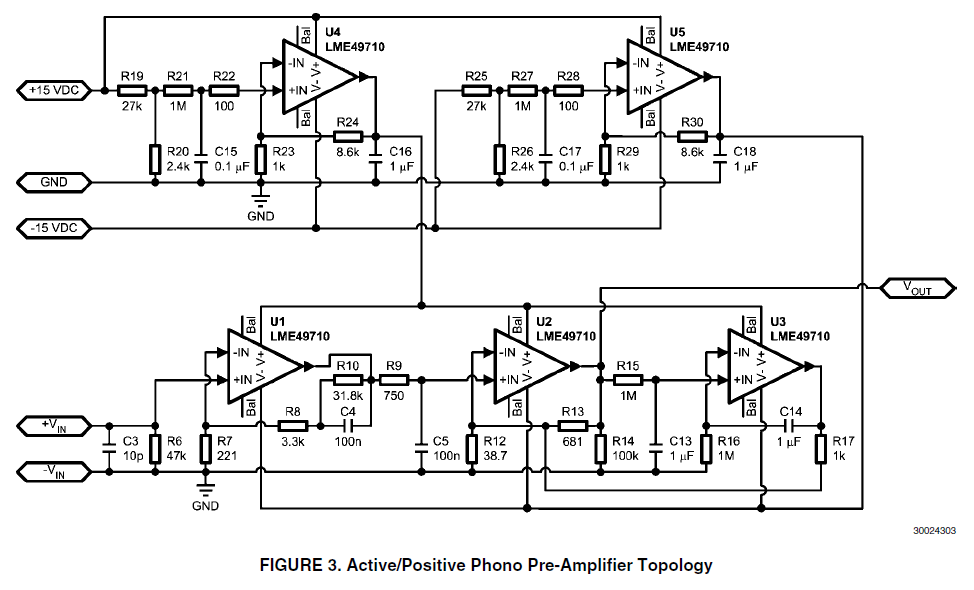
Electric Guitar Preamp Mixer and Line Driver
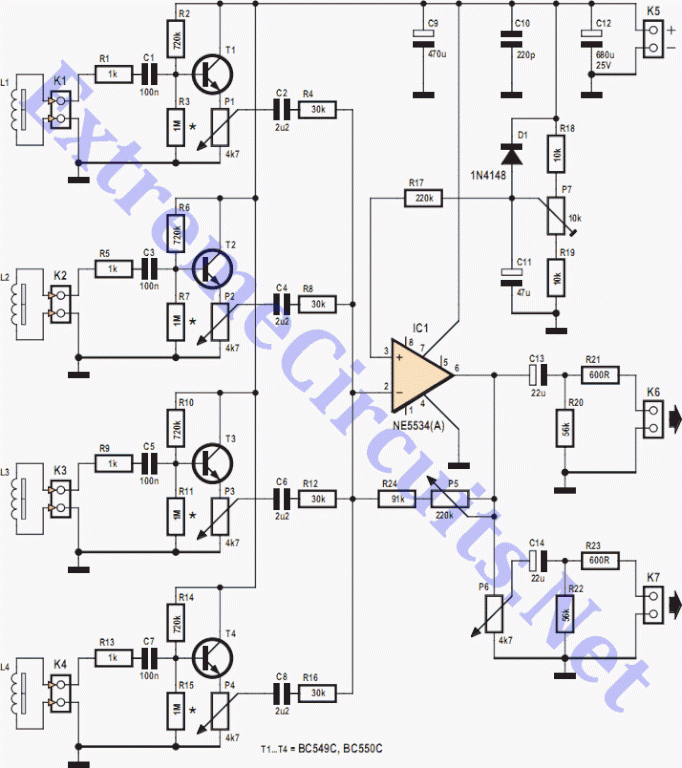
Depending on its design, an electric guitar may have anywhere from one to six pickup elements. Classic (acoustic) guitars could also benefit from one or more pickups.
Electric guitars utilize a variety of pickup configurations to capture the vibrations of the strings and convert them into electrical signals. The number and type of pickups can significantly influence the instrument's tonal characteristics. Common configurations include single-coil pickups, which are known for their bright and clear sound, and humbucker pickups, which offer a thicker, warmer tone and reduce electromagnetic interference.
In a typical electric guitar schematic, each pickup is connected to a selector switch that allows the player to choose which pickup or combination of pickups is active. This switch is usually a 3-way or 5-way toggle switch, depending on the number of pickups. The output from the selected pickup is then routed to a volume control and a tone control, which can shape the signal further before it reaches the output jack.
The wiring of the pickups is crucial for achieving the desired sound. For instance, single-coil pickups are often wired in a way that emphasizes high frequencies, while humbuckers are designed to cancel out noise and produce a more robust output. Additionally, the placement of the pickups on the guitar body can affect the tonal response. For example, pickups located closer to the bridge tend to produce a brighter sound, while those nearer to the neck yield a warmer tone.
Overall, the design and configuration of pickups in electric and acoustic guitars play a vital role in determining the instrument's sound and versatility, making them essential components in the overall guitar circuitry.Depending on its design an electric guitar may have anything from one to six pickup elements. Classic (acoustic) guitars could also benefit from one or mo.. 🔗 External reference
Electric guitars utilize a variety of pickup configurations to capture the vibrations of the strings and convert them into electrical signals. The number and type of pickups can significantly influence the instrument's tonal characteristics. Common configurations include single-coil pickups, which are known for their bright and clear sound, and humbucker pickups, which offer a thicker, warmer tone and reduce electromagnetic interference.
In a typical electric guitar schematic, each pickup is connected to a selector switch that allows the player to choose which pickup or combination of pickups is active. This switch is usually a 3-way or 5-way toggle switch, depending on the number of pickups. The output from the selected pickup is then routed to a volume control and a tone control, which can shape the signal further before it reaches the output jack.
The wiring of the pickups is crucial for achieving the desired sound. For instance, single-coil pickups are often wired in a way that emphasizes high frequencies, while humbuckers are designed to cancel out noise and produce a more robust output. Additionally, the placement of the pickups on the guitar body can affect the tonal response. For example, pickups located closer to the bridge tend to produce a brighter sound, while those nearer to the neck yield a warmer tone.
Overall, the design and configuration of pickups in electric and acoustic guitars play a vital role in determining the instrument's sound and versatility, making them essential components in the overall guitar circuitry.Depending on its design an electric guitar may have anything from one to six pickup elements. Classic (acoustic) guitars could also benefit from one or mo.. 🔗 External reference
